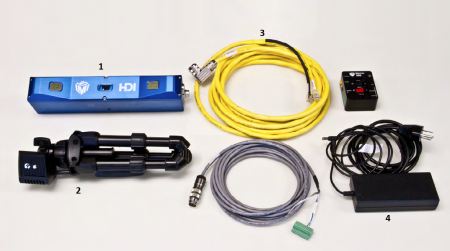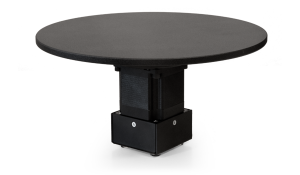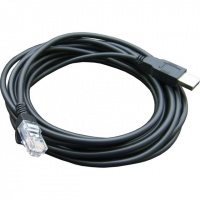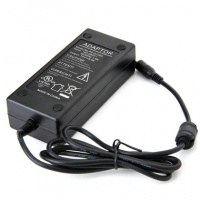Difference between revisions of "3D Scanner"
From __space Wiki
(→LMI Technologies HDI 100 3D scanner : Assembling units) |
|||
| (22 intermediate revisions by 3 users not shown) | |||
| Line 1: | Line 1: | ||
=LMI Technologies HDI 100 3D scanner : Assembling units= | =LMI Technologies HDI 100 3D scanner : Assembling units= | ||
| − | Please see the image to get the list of items. [[File:List_Of_Items.png|thumbnail|Border|right|Alignment| | + | Please see the image to get the list of items. [[File:List_Of_Items.png|thumbnail|Border|right|Alignment|450 px|link=File:List_Of_Items.png|alt=Alt|lang=Langtag|List of items]] |
*Attach the '''HDI 100 scanner (1)''' to the '''table-top tripod (2)''' head by hand-tightening the head knob. | *Attach the '''HDI 100 scanner (1)''' to the '''table-top tripod (2)''' head by hand-tightening the head knob. | ||
| − | *Connect the '''Power and Ethernet Cordset (3)''' to the Power/LAN connector | + | *Connect the '''Power and Ethernet Cordset (3)''' to the Power/LAN connector port on the scanner. Then, hand-tighten the cordset. |
*Connect the Power barrel jack of the '''Power and Ethernet Cordset''' to the '''Power Supply'''. | *Connect the Power barrel jack of the '''Power and Ethernet Cordset''' to the '''Power Supply'''. | ||
| Line 11: | Line 11: | ||
*Connect the Ethernet RJ45 plug of the '''Power and Ethernet Cordset''' ''directly'' to the computer. | *Connect the Ethernet RJ45 plug of the '''Power and Ethernet Cordset''' ''directly'' to the computer. | ||
| − | Now | + | Now that the scanner is all set, let's set up the '''Rotary Table (5)''' [[File:rotary table.png|thumbnail|Border|right|Alignment|size|link=File:rotary table.png|alt=Alt|lang=Langtag|Rotary table (5)]] |
| − | *Connect the RJ11 plug of the '''USB to RJ11 cable (6)''' to the rotary controller. | + | *Connect the RJ11 plug of the '''USB to RJ11 cable (6)''' to the rotary controller. [[File:usb-rj11.jpg|thumbnail|Border|right|Alignment|200 px|link=File:usb-rj11.jpg|alt=Alt|lang=Langtag|USB to RJ11 cable (6)]] |
| − | *Connect the '''Power Supply Adapter | + | *Connect the '''Power Supply Adapter (7)'''. [[File:power supply.jpg|thumbnail|Border|right|Alignment|200 px|link=File:power supply.jpg|alt=Alt|lang=Langtag|Power Supply (7)]] |
*Connect the USB connector of the '''USB to RJ11 cable''' to the computer. | *Connect the USB connector of the '''USB to RJ11 cable''' to the computer. | ||
| Line 23: | Line 23: | ||
=Configuring the 3D scanner software= | =Configuring the 3D scanner software= | ||
| − | *Make sure the scanner is ON, connect the USB license key to the computer then open the '''FlexScan3D''' software. | + | *Make sure the scanner is ON, connect the USB license key (found in scanner box) to the computer then open the '''FlexScan3D''' software. |
| − | *Go to the '''Scanners''' tab, our scanner should be read as HDI 120. | + | *Go to the '''Scanners''' tab, our scanner should be read as '''HDI 120'''. |
| − | *Click on the '''Auto-Configure''' button to configure the LAN connection between the PC and the scanner (requires administrator password). | + | *Click on the '''Auto-Configure''' button to configure the LAN connection between the PC and the scanner (requires administrator password-see _Space.URI staff for assistance). |
*The connection is now ready and the scanner should show some data on the right hand side of the screen. | *The connection is now ready and the scanner should show some data on the right hand side of the screen. | ||
| − | + | =Creating a new project= | |
| − | * | + | *To create a new project, select '''New''' from the '''Project''' tab. Type a project name and press '''OK''' to proceed. |
| − | * | + | *Make sure to leave a ~50 - 90 cm distance between the scanner and the rotary table. The scanner should be pointing to the center of the table. |
| − | * | + | *Put the calibration (checkers) board facing the scanner. |
| − | * | + | *Make sure that there's no high illumination, reflective or shiny objects between the scanner and the board or behind the board. |
| − | * | + | *Check that the checker board fully appears on the two scenes on the right-hand side of the screen with minimum RED and BLUE areas (perfect scene will appear in grayscale). |
| − | + | *You can modify the exposure value to get the best result using the '''Exposure slide''' in the right-hand side of the screen. | |
| − | * | + | *Replace the calibration board with the object you need to scan and modify the exposure configuration if necessary. |
| − | * | + | *Select the '''scan''' tab. The FlexScan3D software is smart enough to provide the optimum configuration to your scene. Check the '''Rotary''', the '''easy scan''' and the '''live scan''' boxes to benefit from its capabilities. |
| − | * | + | *Press the '''easy scan''' red button to start scanning. |
| − | |||
| − | |||
| − | |||
| − | * | + | *When the scan is finished, check the boxes beside all the scanned images thumbnails then click on '''combine''' from the '''combine''' tab. |
| − | * | + | *All the thumbnails should be combined in a single thumbnail now. Check the box beside it then select '''Finalize''' from the '''combine''' tab. Press '''OK''' to create the finalized 3D object. |
| − | * | + | *A new thumbnail should be created with name: '''***_final'''. You can export it by checking the box beside it and clicking '''Export''' in the '''scan''' tab. |
| − | *The | + | *The default export format is '''.obj''' but you can alter this by clicking on the '''arrow''' in the '''Export''' button in the '''scan''' tab. |
| + | |||
| + | *Select the destination folder and press '''OK'''. | ||
| + | |||
| + | [[File:caution.png|75px|frameless|left|alt text]] | ||
| + | == Caution == | ||
| + | |||
| + | |||
| + | The network connection between the PC and the scanner affects the windows default LAN connection settings. Always remember to restore the network default settings ''(i.e., DHCP)'' after finishing to avoid any conflicts. | ||
| + | |||
| + | |||
| + | ==To Reconnect the Internet== | ||
| + | *Reconnect the Ethernet cable from wall to the back of the computer. | ||
| + | *Click the internet access icon on the lower right hand corner of the screen | ||
| + | *Select 'Chang adapter options' | ||
| + | *Right click on 'Ethernet' | ||
| + | *Select 'Properties' | ||
| + | *When prompted ask _Space.URI staff for assistance. | ||
| + | *Click on 'Internet Protocol Version 4 (TCP/IPv4)' then click 'Properties'. | ||
| + | *Select 'Obtain an IP address automatically' then click 'OK' | ||
Latest revision as of 09:49, 14 March 2018
Contents
LMI Technologies HDI 100 3D scanner : Assembling units
Please see the image to get the list of items.
- Attach the HDI 100 scanner (1) to the table-top tripod (2) head by hand-tightening the head knob.
- Connect the Power and Ethernet Cordset (3) to the Power/LAN connector port on the scanner. Then, hand-tighten the cordset.
- Connect the Power barrel jack of the Power and Ethernet Cordset to the Power Supply.
- Connect the Ethernet RJ45 plug of the Power and Ethernet Cordset directly to the computer.
Now that the scanner is all set, let's set up the Rotary Table (5)
- Connect the RJ11 plug of the USB to RJ11 cable (6) to the rotary controller.
- Connect the Power Supply Adapter (7).
- Connect the USB connector of the USB to RJ11 cable to the computer.
Now, you can plug the power cords of both the scanner and the rotary table to the power supply.
Configuring the 3D scanner software
- Make sure the scanner is ON, connect the USB license key (found in scanner box) to the computer then open the FlexScan3D software.
- Go to the Scanners tab, our scanner should be read as HDI 120.
- Click on the Auto-Configure button to configure the LAN connection between the PC and the scanner (requires administrator password-see _Space.URI staff for assistance).
- The connection is now ready and the scanner should show some data on the right hand side of the screen.
Creating a new project
- To create a new project, select New from the Project tab. Type a project name and press OK to proceed.
- Make sure to leave a ~50 - 90 cm distance between the scanner and the rotary table. The scanner should be pointing to the center of the table.
- Put the calibration (checkers) board facing the scanner.
- Make sure that there's no high illumination, reflective or shiny objects between the scanner and the board or behind the board.
- Check that the checker board fully appears on the two scenes on the right-hand side of the screen with minimum RED and BLUE areas (perfect scene will appear in grayscale).
- You can modify the exposure value to get the best result using the Exposure slide in the right-hand side of the screen.
- Replace the calibration board with the object you need to scan and modify the exposure configuration if necessary.
- Select the scan tab. The FlexScan3D software is smart enough to provide the optimum configuration to your scene. Check the Rotary, the easy scan and the live scan boxes to benefit from its capabilities.
- Press the easy scan red button to start scanning.
- When the scan is finished, check the boxes beside all the scanned images thumbnails then click on combine from the combine tab.
- All the thumbnails should be combined in a single thumbnail now. Check the box beside it then select Finalize from the combine tab. Press OK to create the finalized 3D object.
- A new thumbnail should be created with name: ***_final. You can export it by checking the box beside it and clicking Export in the scan tab.
- The default export format is .obj but you can alter this by clicking on the arrow in the Export button in the scan tab.
- Select the destination folder and press OK.
Caution
The network connection between the PC and the scanner affects the windows default LAN connection settings. Always remember to restore the network default settings (i.e., DHCP) after finishing to avoid any conflicts.
To Reconnect the Internet
- Reconnect the Ethernet cable from wall to the back of the computer.
- Click the internet access icon on the lower right hand corner of the screen
- Select 'Chang adapter options'
- Right click on 'Ethernet'
- Select 'Properties'
- When prompted ask _Space.URI staff for assistance.
- Click on 'Internet Protocol Version 4 (TCP/IPv4)' then click 'Properties'.
- Select 'Obtain an IP address automatically' then click 'OK'




